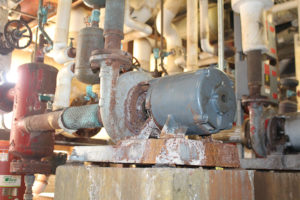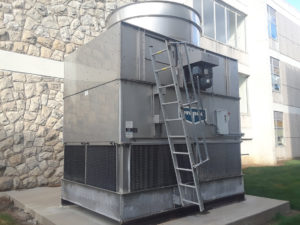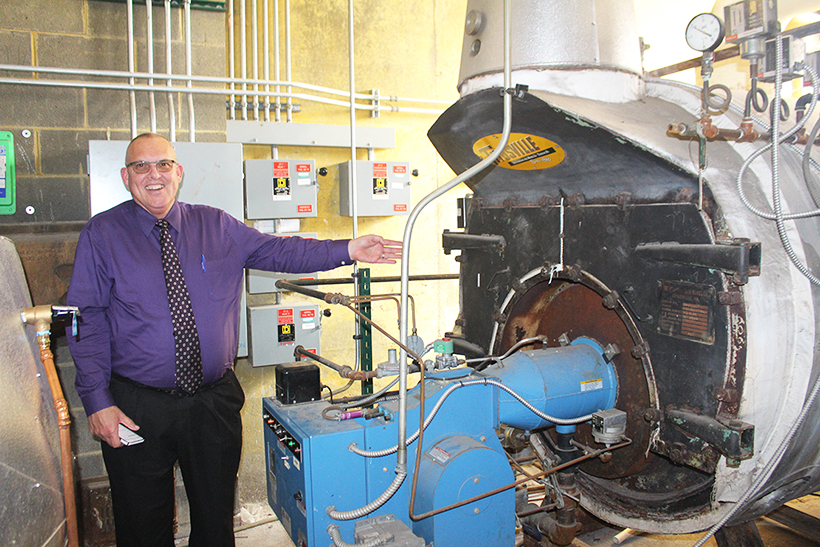The leaves changing color and falling from trees mark more than just fall and colder weather. For Facilities Planning and Operations workers, it means buildings need to be prepared to handle the cold weather that’s coming right around the corner.
Preparing buildings for winter includes more than just flipping a switch from “cool” to “heat.” There are heating systems to be prepared for use, cooling systems to be shut down and plumbing systems to be inspected and prepared for cold weather.
Tim Castilaw, associate vice president of capital planning and facilities management, said preparing buildings for winter doesn’t start in the fall.
“Our winter preparation actually starts in the summer,” Castilaw said. “That’s when we’ll do all of our seasonal cleaning and preparation of our boilers for our winter heating season.”
David Davis, FPO director, said seven people are tasked with winterizing buildings, which includes HVAC and boiler technicians. Castilaw said it takes at least two days to prepare a building, but can take more time depending on the building’s size, equipment age and type and whether any repairs are needed.
Boilers are the backbone to keeping buildings comfortable throughout the winter by providing heat and hot water. The process for cleaning and preparing the 65 boilers on campus is lengthy but done annually by in-house personnel for safe and efficient operation. Castilaw said boilers have their burners and tubes cleaned, combustion and efficiency checked followed by a final leak test.
“It’s not just the boiler itself,” Castilaw said. “It’s also the associated pumps and stuff that have an impact on keeping the buildings warm and keeping the boilers operating correctly.”

Along with the boilers, pumps responsible for moving heated water throughout buildings also get checked annually. (Photo by Garrett Fuller, assistant design editor.)
Castilaw said boiler technicians make rounds to each boiler on campus daily to ensure correct operation during the heating season.
At least one boiler must be online at any time to meet the building’s demand for hot water in buildings that use a boiler to produce hot water.
Castilaw said rooftop and forced-air gas heating systems are also checked and cleaned prior to the heating season.
Davis said the only problems they encountered while winterizing buildings this year occurred while preparing boilers for the upcoming winter. Boilers in the W.C. Morris Science Building and Fitzgerald Hall both needed to be taken offline temporarily to make repairs. Hot water and heating service is not being interrupted to make the repairs, as both buildings have more than one boiler.
Castilaw said air conditioning systems are also cleaned and prepared for the winter. Water-cooled cooling towers are drained and cleaned after being shut down, while air-cooled chillers are shut down and cleaned.

Cooling towers, such as the one pictured, and the air-cooled chillers are cleaned and prepared to prevent damage from cold weather. (Photo by Garrett Fuller, assistant design editor.)
Outside plumbing systems are prepared for the winter. Castilaw said irrigation systems, sprinklers and fountains are shut off and drained before having their backflow systems removed and stored. Water spigots on the exterior of buildings are capped off to prevent freezing.
While the central control system for the heating, ventilation and air conditioning systems for campus scales back the temperature inside most campus buildings to conserve energy, Castilaw said Public Safety makes rounds to ensure no problems arise inside the buildings, such as drafts or leaks.
In addition to preparing climate control and plumbing systems, basic building elements such as the roof and window seals are checked and fixed as needed.
Vacant buildings receive special care during the winter. Castilaw said closed buildings like Diemer and Yeater have their water shut off and drained, while buildings vacated for winter break are checked daily and have their heat automatically controlled at a lower temperature.



Leave a Reply